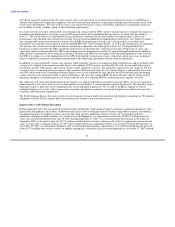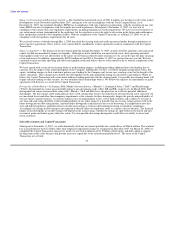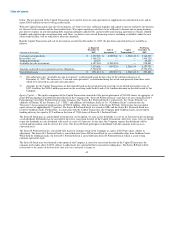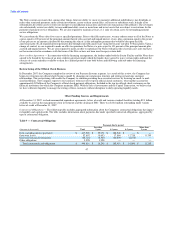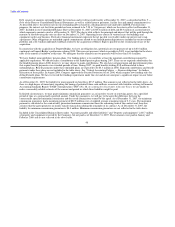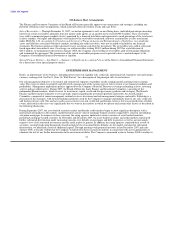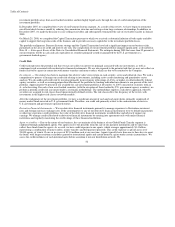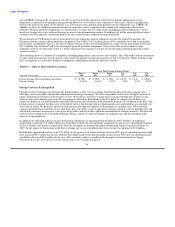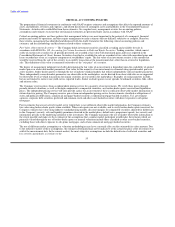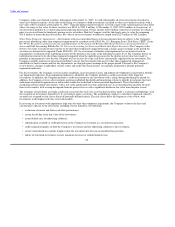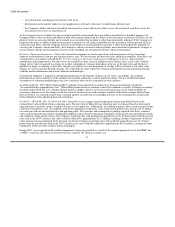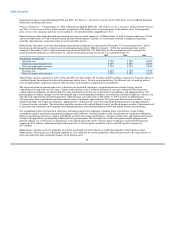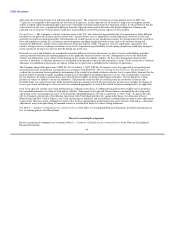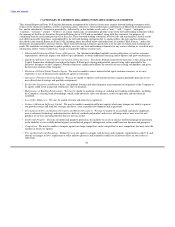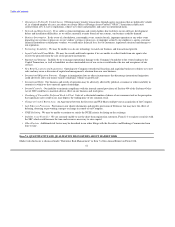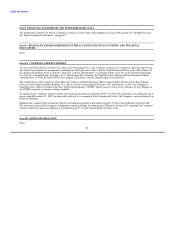MoneyGram 2007 Annual Report Download - page 55
Download and view the complete annual report
Please find page 55 of the 2007 MoneyGram annual report below. You can navigate through the pages in the report by either clicking on the pages listed below, or by using the keyword search tool below to find specific information within the annual report.
Table of Contents
investment portfolio away from asset-backed securities and into highly liquid assets through the sale of a substantial portion of the
investment portfolio.
In December 2007, we completed the review of our Payment Systems segment. As a result of this review, we have begun to restructure
our official check business model by reducing the commission structure and exiting certain large customer relationships. In addition, in
December 2007, we made the decision to cease selling receivables and subsequently terminated the sale of receivables facility in January
2008.
On March 25, 2008, we completed the Capital Transaction pursuant to which we received a substantial infusion of both equity and debt
capital to support the long term needs of the business and to provide necessary capital due to the investment portfolio losses.
The portfolio realignment, Payment Systems strategy and the Capital Transaction have had a significant impact on our business risks,
particularly in the areas of credit and interest rate risk. The composition of our investment portfolio changed significantly, as described in
Note 18 — Subsequent Events of the Notes to Consolidated Financial Statements. We anticipate during 2008 that more than 95 percent of
our investments will be in cash and cash equivalents or securities primarily issued or guaranteed by the U.S. government or a
government-backed agency.
Credit Risk
Credit risk represents the potential risk that we may not collect on interest or principal associated with our investments, as well as
counterparty risk associated with our derivative financial instruments. We are also exposed to the potential risk that we may not collect on
funds received by agents in connection with money transfers and money orders, which are due to be remitted to the Company.
Investments — Our strategy has been to maximize the relative value versus return on each security, sector and collateral class. We used a
comprehensive process to manage our credit risk relating to investments, including active credit monitoring and quantitative sector
analysis. We also addressed credit risk by investing primarily in investments with ratings of A3/A- or higher or collateralized by federal
agency securities, as well as ensuring proper diversification of the portfolio by limiting individual investments to one percent of the total
portfolio. Approximately 96 percent of our available for sale investment portfolio at December 31, 2007 consisted of securities with an
A- or better rating. For each of our asset-backed securities (with the exception of those backed by U.S. government agency securities), we
perform a periodic credit risk assessment under a systematic methodology. The methodology employs a risk driven approach, whereby
securities are assigned to risk classes based upon internally defined criteria. The risk classes drive the frequency of the review with
investments in the highest risk classes reviewed monthly.
After the realignment of the investment portfolio, we have a significant amount of cash and cash equivalents, primarily comprised of
money market funds invested in U.S. government funds. Therefore, our credit risk primarily relates to the concentration of assets in
U.S. government and government sponsored entities.
Derivative Financial Instruments — We use derivative financial instruments primarily to manage exposures to fluctuations in interest
rates and foreign currency exchange rates. If the counterparties to any of our derivative financial instruments were to default in payments
or otherwise experience credit problems, the value of the derivative financial instruments would decline and adversely impact our
earnings. We manage credit risk related to derivative financial instruments by entering into agreements only with major financial
institutions and regularly monitoring the credit ratings of these financial institutions.
Agent receivables — Due to the nature of our business, the vast majority of the business of our Global Funds Transfer segment is
conducted through independent agents. Our agents receive the proceeds from the sale of our payment instruments and we must then
collect these funds from the agents. As a result, we have credit exposure to our agents, which averages approximately $1.4 billion,
representing a combination of money orders, money transfers and bill payment proceeds. This credit exposure is spread across over
24,000 agents, of which 12 owe us in excess of $15.0 million each at any one time. Agents typically have from one to three days to remit
the funds, with longer remittance schedules granted to international agents and certain domestic agents under certain circumstances. We
assess the creditworthiness of each potential agent before accepting it into our distribution network. We
52


